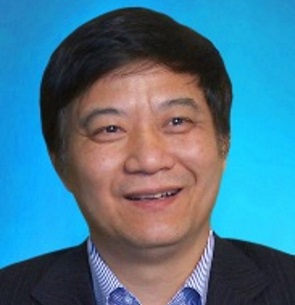
Ben Zhong TANG
The Hong Kong University of Science & Technology,
Hong Kong, China
Plenary Lecture | Wednesday, 21 June 2017 | 08:30 – 09:15 hrs
Aggregation-Induced Emission: A Wonderland Full of Exoticism and Excitement
Abstract:
Efficient luminescent materials hold great promise for high-tech applications in optoelectronics, chemosensing, bioimaging, etc. Light emission of a traditional luminophore is often weakened or quenched when its molecules are aggregated, which is notoriously known as aggregation-caused quenching (ACQ). Considering that luminophores are commonly used as solid or aggregate, strong solid-state emitters are highly desirable. In 2001, we found that some propeller-like molecules showed luminescence behavior that was exactly opposite to the ACQ effect: the aggregate formation turned on their light emissions, changing them from weak fluorogens into strong emitters. We termed this novel phenomenon as aggregation-induced emission (AIE).
Through detailed mechanistic study of the photophysical processes, restriction of intramolecular motion (RIM) was identified as the main cause for the AIE effect. Under the guidance of the RIM mechanism, we have developed a great number of new fluorescent and phosphorescent AIE luminogens (AIEgens) with emission colors covering the entire visible, extending into UV and IR, spectral region. We have also utilized the AIEgens to tackle problems in the areas of energy, environment and health, the grant challenges faced by the contemporary society. In this lecture, I will share the excitement in studying this group of wonder molecular aggregates and in exploring their exotic applications which are difficult, if not impossible, to achieve with the traditional ACQ luminophores.
[1] J. Mei, Nelson L. C. Leung, Ryan T. K. Kwok, Jacky W. Y. Lam and B. Z. Tang, “Aggregation-Induced Emission: Together We Shine, United We Soar!” Chem. Rev. 2015, 115, 11718.
>> BIOGRAPHY